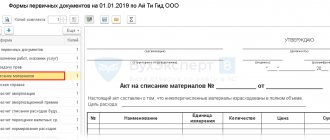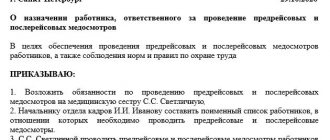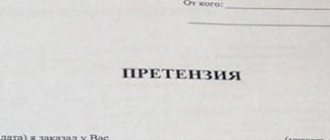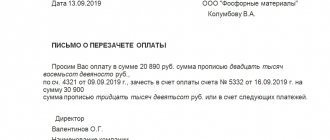What it is
This is a document for transfer from the seller to the client, which is required to record the completion of the next business transaction. It is called that because it combines the functionality and important fields of several files - SF and primary files.
The main goal is to reduce and speed up document flow, avoid errors and unnecessary time delays. Now included as standard data for successful transaction completion. It can be used for tax purposes, which greatly simplifies the process.
Completing all or individual signatures in the UPD is a serious part of the transaction. This form confirms that everything is drawn up correctly, the parties agree to this, and the paper is filled out correctly. You should clarify in advance who should sign and where.
For what purposes may it be needed?
Based on this file, they claim a tax deduction, maintain correct accounting, and write off incurred costs. With its help, the time and effort of employees is seriously saved, and the number of necessary documents is reduced.
When selling or shipping goods, the company no longer collects a package of documentation from delivery notes, invoices and other transfer files. Everything is already written down on a single universal sheet.
In fact, this is the SF, supplemented with the necessary lines, in particular, about shipment and acceptance. When the paper is completed correctly, it can be sent to the tax office and contractors.
The main thing is that before switching to a new system, this should be fixed in the accounting policy. It is important to make all changes before the start of the new tax period.
Why is UPD needed?
After the auction is completed, the customer enters into a contract with the winning bidder. The next stage is the delivery of purchased goods, works or services. The fact of delivery is reflected in the primary accounting registers:
- invoice;
- waybill;
- acceptance certificate (work performed).
For the convenience of suppliers and customers, all these primary registers are replaced by one - a universal transfer document. It is necessary for the parties to reflect the actual sale of goods, works and services by the supplier and their receipt and acceptance by the customer. With the help of UTD, goods, works and services are accepted. But there are no instructions on how to do UPD during government procurement for construction - the contractor confirms the work performed with a KS-2 certificate and certifies their cost with a KS-3 certificate.
A universal transfer document is generated on the basis of an invoice (letter of the Federal Tax Service No. ММВ-20-3 / [email protected] dated 10/21/2013). It contains all the same details as in the settlement register. Suppliers have the right to use the form accepted by the Federal Tax Service and supplement it with indicators required by the company due to industry or organizational specifics (letter of the Federal Tax Service of Russia No. ED-4-15/18322 dated September 14, 2017).
IMPORTANT!
From 07/01/2021 a new invoice form is in effect. Those completing the recommended Status 1 Universal Deed of Transfer form will need to add a new line 5a. It indicates the shipment document. Changes should also be made to your own UPD form (letter of the Federal Tax Service of Russia No. ЗГ-3-3/4368 dated June 17, 2021).
UTD is used in primary accounting and taxation to reflect VAT. The transfer document will help the value added tax payer confirm the transaction in order to then issue a VAT deduction and confirm costs when calculating income tax. In addition, customers upload a scan of the UPD to the State Inspectorate of the Unified Information System to confirm the execution of the government contract. Universal transfer documents are also used when transferring ownership rights for various assets and when concluding transactions involving intermediaries.
Ready-made solutions for all areas
Stores
Mobility, accuracy and speed of counting goods on the sales floor and in the warehouse will allow you not to lose days of sales during inventory and when receiving goods.
To learn more
Warehouses
Speed up your warehouse employees' work with mobile automation. Eliminate errors in receiving, shipping, inventory and movement of goods forever.
To learn more
Marking
Mandatory labeling of goods is an opportunity for each organization to 100% exclude the acceptance of counterfeit goods into its warehouse and track the supply chain from the manufacturer.
To learn more
E-commerce
Speed, accuracy of acceptance and shipment of goods in the warehouse is the cornerstone in the E-commerce business. Start using modern, more efficient mobile tools.
To learn more
Institutions
Increase the accuracy of accounting for the organization’s property, the level of control over the safety and movement of each item. Mobile accounting will reduce the likelihood of theft and natural losses.
To learn more
Production
Increase the efficiency of your manufacturing enterprise by introducing mobile automation for inventory accounting.
To learn more
RFID
The first ready-made solution in Russia for tracking goods using RFID tags at each stage of the supply chain.
To learn more
EGAIS
Eliminate errors in comparing and reading excise duty stamps for alcoholic beverages using mobile accounting tools.
To learn more
Certification for partners
Obtaining certified Cleverence partner status will allow your company to reach a new level of problem solving at your clients’ enterprises.
To learn more
Inventory
Use modern mobile tools to carry out product inventory. Increase the speed and accuracy of your business process.
To learn more
Mobile automation
Use modern mobile tools to account for goods and fixed assets in your enterprise. Completely abandon accounting “on paper”.
Learn more Show all automation solutions
When to use
It can be used when performing most acts of economic life. This may include sale, transfer of property rights, shipment, and other actions related to a change of organization. Most often it is filled out when:
- supplies, contract work;
- transactions in which the owners of property and products change;
- formalizing interactions with intermediaries.
In addition, the Federal Tax Service separately described some types of activities in the second appendix to the letter. This document is recommended, but participants in the process should remember where to sign the UPD for the buyer upon receipt, and for the seller upon transfer. Correct filling is extremely important.
Another nuance is that a legal entity can apply it at its own discretion. For example, it will switch to a similar document flow for only one type of transaction, and for the rest it will continue to use standard SF and other primary documents.
By whom and how is the UPD signed?
Signatures in the UPD are mandatory details. Regardless of the status of the UPD, it must contain the following signatures:
- The head of an organization (or an individual entrepreneur). The manager may transfer his signing authority to an authorized person. Authority must be confirmed by a separate internal act of the organization - an order or power of attorney;
The procedure and sample for drawing up a power of attorney for the right to sign the UPD is available in ConsultantPlus. If you do not have access to the K+ system, get a trial demo access for free.
- Chief accountant. At the same time, the authority to sign the UPD can also be delegated to another person on the same basis as the manager.
The presence of these signatures is due to the requirements of the Tax Code of the Russian Federation (Article 169) and the Decree of the Government of the Russian Federation “On the rules for filling out documents for VAT calculations” dated December 26, 2011 No. 1137.
about the attitude of Ministry of Finance officials to signatures in facsimile form by following the link.
For additional signatures on the part of the seller, lines 10, 13 of the recommended UPD form are intended:
- In line 10 “Goods (cargo) transferred / services, results of work, rights handed over,” the person who actually shipped the goods, or the person who actually transferred the results of work, services or property rights on behalf of the enterprise, must sign.
- Line 13 “Responsible for the correct registration of the fact of economic life” must contain the signature of the person whose responsibilities include monitoring the correct documentation of the event reflected in the UPD. It could be:
- A person authorized to act on a transaction (for example, to ship goods). Then the data on line 13 will coincide with the data on line 10. Then in line 13 you can fill in only the data of the responsible person, without duplicating the signature.
- Person authorized to sign invoices. Then the data on line 13 will coincide with the mandatory signature of the manager or chief accountant. In this case, it is also possible not to duplicate the signature, entering in the line only the position and full name of the already specified person.
- Another person designated by internal administrative documents of the organization. Then line 13 must contain the following in full: position, full name, signature. It is possible that several people are responsible for the correct registration and documentation of a certain type of business transaction in an organization. Then it is possible to enter additional lines into the UPD - for example, 13a, so that all the necessary signatures are present in the document.
ConsultantPlus experts explained in detail the rules for signing the UPD by both parties to the transaction:
If you don't have access to the system, get a free trial online.
This publication will tell you whether it is possible to add details of the current invoice form to the UPD.
For additional signatures on the part of the buyer, the UPD contains lines 15 and 18.
- In line 15 “Goods (cargo) received / services, results of work, rights accepted,” the actual recipient of the subject of the transaction signs. In this case, the powers of the signatory are determined taking into account the provisions of the Civil Code of the Russian Federation:
- Or it is the buyer himself, through his responsible person.
- Or it is the consignee indicated by the buyer in the contract or administrative documents thereto (Article 509 of the Civil Code of the Russian Federation). In this case, the UPD in column 15 is signed by the representative of the consignee.
- In line 18 “Responsible for the correct registration of the fact of economic life”, a person is signed on the buyer’s side, determined in the same way as for the seller. The only difference is that the buyer's representative is involved here. The option is also being considered that there may be several such persons, so it is possible to introduce additional lines (for example, 18a, 18b, and so on).
NOTE! It is best to determine the circle of those who will sign the UPD in advance, at the stage of organizing the transition to the UPD, and include this as separate provisions in the order on the transition to the UPD and (or) in the relevant local regulations.
For a sample order to switch to UPD, see the publication “Drawing up an order to switch to UPD - sample filling”.
What must be indicated
There is a list of fields that must be filled in by the selling party when using this form. The standard list of details includes:
- name of the form;
- date when they started compiling;
- names of participating organizations or full names. IP;
- what is the operation;
- the result of the commission in kind or monetary terms, indicating units of measurement;
- Name and position of the person who is responsible for the operation.
Since it can replace a whole set of documents and act as independent primary documentation, it contains one more permanent requisite - status. There are only 2 of them:
- Used as SF.
- As a primary source for reporting.
In the second case, it is allowed not to enter information about the rate, as well as the “country code and its name.” You can apply for a deduction when “1” is indicated, or in the case when all the necessary lines were written down, but “2” was written by accident or mistake. It is worth noting that it is not allowed to be filled out only as a SF, in particular because for these purposes a separate status is required, but there is none. Therefore, it should be considered more broadly.
Buyer's signatures
As you know, there is no buyer's signature on the invoice. Therefore, the signer of the UTD must be determined by the same rules as the signer of the primary document.
The buyer must have 2 signatures:
Who is responsible and accepts the cargo is determined by the local acts of the organization. If this is the same person, then in line 18 it is enough to indicate the position and full name. There is no need to re-sign .
Rules for signing all types of UPD from all sides for any standard buyer
The number of signatories from both the client and the seller may vary. Who should sign depends on how powers are distributed in a particular company - who is responsible for the transfer of goods, confirms the correctness of what happened, recalculation in terms of quantity and quality. We suggest you look into this important moment in more detail.
It doesn’t matter what the status is, 2 signatures are recommended:
- Head of the company. In fact, the head of the enterprise has the right to delegate this task to a special authorized person if he is confident in the abilities of the subordinate. Such permissions should be documented by a special internal act, power of attorney or order. Without this, a person should not touch official documentation.
- Chief accountant. The situation is the same. A specialist can delegate this work to another person if this is stipulated in the accounting policy.
Mandatory and recommended signatures in the UPD from management on the part of the supplier
This prop is present in several lines at once:
- in the part separated by a bold frame, the head of the company or division and the chief accountant, or the persons to whom they have officially authorized this, will need to sign;
- there is a place where the employee who sent the goods or performed the service must sign, along with his last name, initials and place of work;
- below are UPD signatories who have the right to draw up forms as primary documentation;
- under it there is a column for the cargo receiver, who is responsible for careful and correct movement between enterprises and within it from the buyer;
- one of the last fields for the employee to assure that everything was done correctly.
To minimize the likelihood of errors, it is worth installing special software on work computers. It optimizes many processes and saves employee time. You can find suitable equipment and software in Cleverence.
Find out how to speed up the acceptance of goods 10 times?
Find out more
Who, how and where has the right to sign the UPD: what happens to the seller when registering according to a pre-drawn up sample
As we said above, it is mandatory to have the signature of the head of the enterprise or division and the chief accountant or the people who legally replace them in the SF section.
When filling out line 10, it is allowed not to sign if the same person has the right to accept the cargo and issue the invoice. Then it is enough to sign in the section for the Federation Council, and in field 10 write the position and full name.
It is realistic not to sign in column 13 if the same citizen will accept and be responsible for the results.
Rules for registration and signing of all UPD, which are recommended to be followed from the side familiar to any buyer
After the block that talks about the seller of the products, there are several lines where data from the client will be useful. In field number 15, the signature of the person responsible for acceptance is required, as well as his position and full name.
In 18 information about the person responsible for the correct formation of the operation is indicated. Here you are allowed not to sign if only one employee accepts and ensures correctness. Then the full name will suffice. and the place it occupies.
You should check how organic everything is, so that later there are no questions from the tax inspectorate. It’s not difficult to create a form using a trading program; all that remains is to provide the appropriate marks in the right places.
Correct execution of the UTD signature on the part of the seller
How large the next inspection by Federal Tax Service specialists will be depends on how accurately the files are prepared.
More signatures will be required from the supplier or distributor if the paper has status “1”. In this case, it acts simultaneously as a primary and an invoice, so at least 3 participants from this counterparty are required - the manager, the chief accountant and the person in charge who checked the shipment. In some fields this may be the same employee, then you can simply indicate your full name. in the fields.
In “2” status it is not necessary to sign in the block that relates to the SF.
Where is the person who ordered the product noted?
Field 15 requires the person who accepts the service or product to sign. Full name is also indicated there. and who this person works for. If the client (the company ordering the work/services) designates a director or other management level, then you can enter only your full name in line 18. and who he serves.
Reflecting the performers
If you are wondering what signatures may be required in the UTD from implementers, then they also have their own fields.
For this form this is block 13. The master who has the right to draw up such papers in the form of primary documents should be noted here. This person necessarily appears and is reflected in the documentation.
These are merchandisers who are responsible for loading and checking the quality of stowage, or an accountant who cleared the loaded vehicle for shipment. It is required to enter the specialist who is directly related to the event in the economic life of the organization. The only caveat is that he needs appropriate access and permission from his superiors.
Where is the signature placed on the UPD and who has this right?
The place where different parties will sign is fixed in the form and does not change from one file to another. The general view is only recommended, but the block containing the details for the invoice cannot be deleted or skipped. It must be filled out in accordance with all the rules. The seller and his representatives will do this first. They record that everything is loaded and prepared, counted, complies with the requirements of the law and is in full compliance with the contract.
When the cargo reaches the buyer, his employees will be required to double-check everything in terms of quantity and quality, and put the appropriate marks. As we said above, all participants in the transaction must have the authority to sign, otherwise the document will lose legal force.
Place of signatures in the UPD
The basis for the UPD form was the invoice form. In 2022, it has undergone minor changes.
IMPORTANT!
The UPD form was proposed in the letter of the Federal Tax Service of Russia dated October 21, 2013 No. ММВ-20-3/96.
The current UPD form according to the Federal Tax Service can be downloaded for free from the link below:
Mandatory signatures in the UPD are placed in two blocks:
- invoice
- primary
The UPD can act not only as a combined document, but also as only a primary document . To differentiate, you should indicate the status in the upper left corner of the UPD:
- “1” – combined document;
- “2” – only primary (special regime officers can use UPD with this status).
Who signs the UPD on the buyer’s side is uniform, regardless of the status of the document. But the signatures in the UPD on the part of the seller may differ with the corresponding status.
The general rules for affixing signatures to the UPD are as follows:
- indicate the position of the signatory, his full name. and, in fact, the autograph itself;
- The use of a facsimile signature is unacceptable - both in the part related to the invoice and in the primary part.
Seal
We studied where in the UPD the buyer must check the data and sign, and where the shipper must. Now it’s time to figure out whether the form needs to be certified.
This is not required by law. Paragraph 5 of Article 169 contains a complete list of details without which you cannot work. And this element is not in it. Moreover, the presence of a blue round frame is not an important parameter for both the invoice and the primary document.
There is a nuance - if the parties to the transaction have come to the conclusion that everyone will put a stamp and the full name of the organization, then they will not have to fill out lines 14 and 19. But this only applies to companies that plan long-term cooperation, and change the they are not going to template.
Mandatory UPD details
The required set of details in the UPD is determined by the requirements of several legislative acts. We indicate the necessary articles:
- Art. 9 of the Law “On Accounting” dated December 6, 2011 No. 402-FZ. According to it, the primary accounting document, mandatory for recording the fact of financial and economic activity, must contain the following information:
- document's name;
- date of compilation;
- name of the enterprise or full name of the entrepreneur participating in the transaction;
- content of a business transaction;
- the result of measuring a transaction in money or in kind, and the units of measurement must be indicated;
- the name of the position of the person who completed the transaction (operation) and is responsible for how it is executed, or, if another individual person is responsible for the execution, then the data of this other person;
- signatures of persons and identification data of persons named in the previous subparagraph.
- Art. 252, 313 Tax Code of the Russian Federation. In accordance with them, in order to accept objects for tax accounting, for the purposes of income tax calculations, taxpayers are obliged to confirm the events of economic activity with primary accounting documents (drawn up in accordance with legal requirements).
- Art. 169 of the Tax Code of the Russian Federation. Indicates that the basis for accounting for VAT amounts is an invoice. Taking into account the letters of the Federal Tax Service regarding the UPD, we can assume that the UPD can also be the basis for tax accounting for VAT, but only if it contains all the necessary invoice details.
Since the UPD can be used both as a substitute for a set of documents and as an independent primary document (for example, for special regime officers), it provides another mandatory requisite - status:
- 1 — UPD is used as a set of documents, including as an invoice.
- 2 — UPD is used as a primary accounting document. In this case, some columns related to the invoice may not be filled in (for example, “tax rate” (column 7), “code and name of the country of origin of the goods” (columns 10, 10a), “registration number of the customs declaration" (gr. 11)).
Can the seller deduct VAT if the buyer formalized the return of the goods not with an invoice, but with an UPD, find out by following the link.
What documents does it replace?
Above we talked about how to correctly sign the UPD for the buyer and seller. It remains to figure out what this file can be used instead.
The main purpose of this form is to be used instead of the whole set. It easily combines lines for invoices and various primary items. And the ability to create additional fields makes it truly versatile. In fact, this is a sales form with added columns about shipment and acceptance.
In addition, it is allowed to send it not only to the counterparty and the client. You can generate it and send it to the tax office. It is important not to forget to first record it in the accounting policy, and then do not change the template, use one form.
According to the law, each company can independently choose how to operate. That is, the company is able to interact in this way with only one counterparty or a group of them, or prepares similar files for everyone at its own discretion.
It is in order to determine the powers of a paper that it has a status. We have already talked about this above. We remind you that you should check whether the document is marked with 1 or 2.
It is especially important to use UPD for companies that provide services and at the same time sell goods or products. With its help, you can refuse to issue a certificate of completion of work in combination with the SF.
This was developed and proposed by Federal Tax Service specialists. It helps to significantly reduce the amount of documentation that needs to be accurately prepared and handed over to the client for signature. It is advisory in nature, so it is allowed to supplement it with other important lines for the company, so as not to create separate forms for 1-2 columns. Everything can be combined and a template can be organized once, which the enterprise will use when interacting with contractors.
This is a good file for entrepreneurs who are on a simplified basis. Although they do not create or issue invoices, they are allowed to use UTD. It is only advisable to carefully fill out all the lines, especially the status. There can only be the number “2”.
Electronic UPD
UPD in electronic form can be issued subject to certain conditions:
- Compiled in the format approved by order of the Federal Tax Service of Russia dated December 19, 2018 No. ММВ-7-15/820.
- An agreement on the exchange of UTD in electronic form has been reached and signed with the counterparty.
Signs an electronic document:
1. Selling side:
- enhanced qualified electronic signature of the manager (authorized person);
- electronic signature of the person responsible for the operation.
2. Acquiring party:
- reinforced by a qualified signature of the person responsible for registration of the fact of ownership. life;
- electronic signature of the person responsible for the operation.
Results
We looked at who signs the universal transfer document (UTD) on the part of the seller or supplier, how many and where signatures should be.
We studied the nuances and norms that must be followed in order to conduct business correctly. Typically, a company regularly performs the same operations, which means that the primary and financial functions can be automated and templates can be created. This will minimize the likelihood of errors and significantly simplify the work of the company’s specialists. Number of impressions: 56667
What is UPD used for?
It is not by chance that the universal transfer document got its name. It is called “universal” because it combines several documents. The purpose of such a merger is to reduce document flow. After all, for the same operation, 2 different documents were previously drawn up - a waybill (or act) + an invoice. The functions of these documents are different, but the data almost completely repeated each other.
Therefore, since 2013, a new document was introduced into circulation - UPD. It combines the functionality of a primary document and an invoice.
Naturally, in this case we are talking about those who apply the general taxation system. Organizations and individual entrepreneurs in special regimes are exempt from preparing invoices. Therefore, for them, the use of UTD is often not justified, although it is not prohibited .






